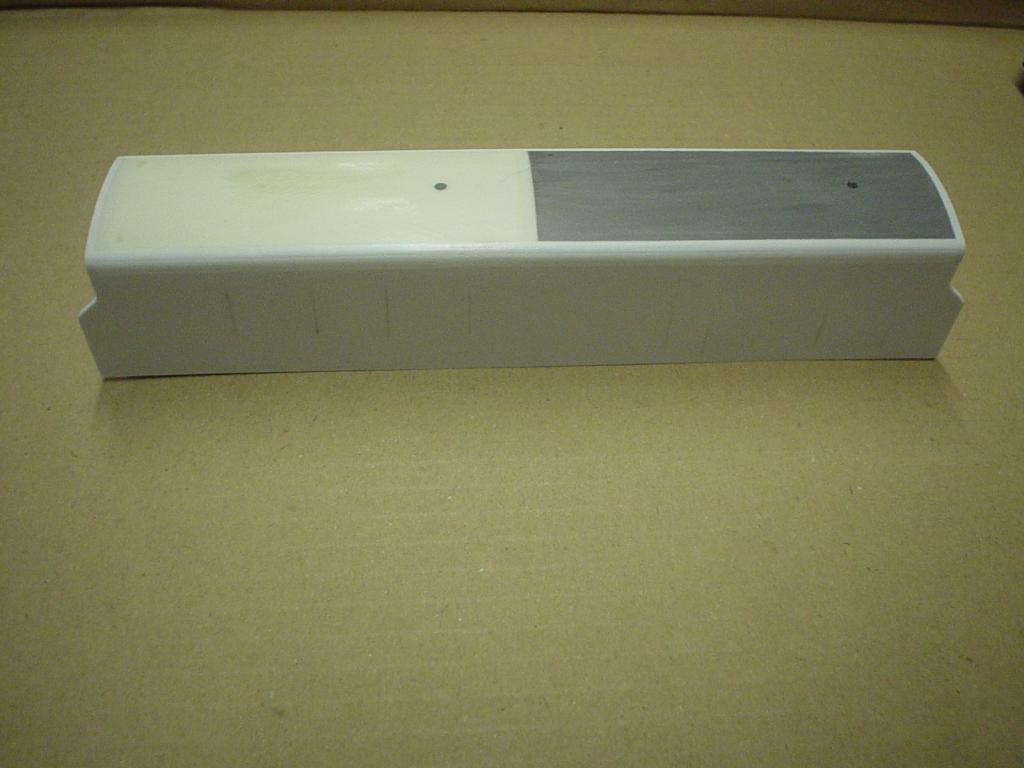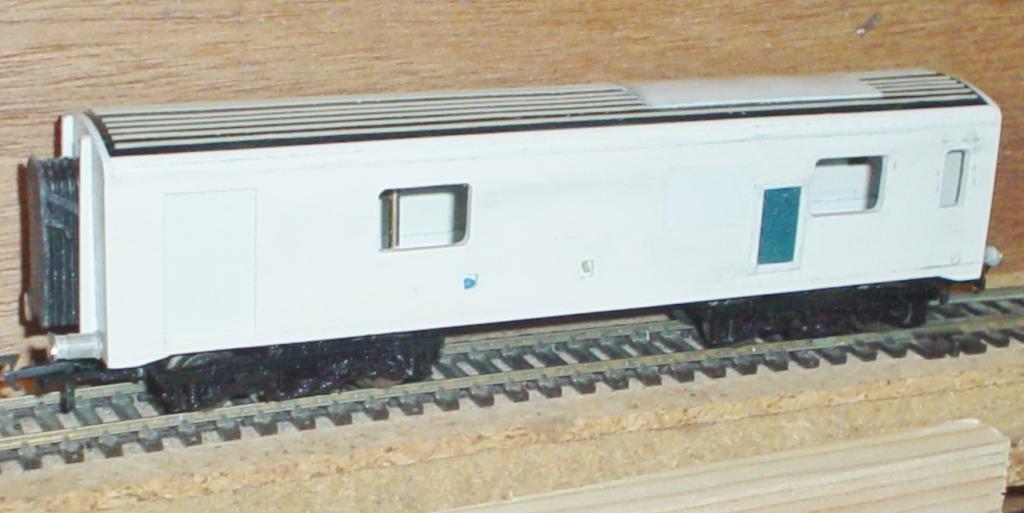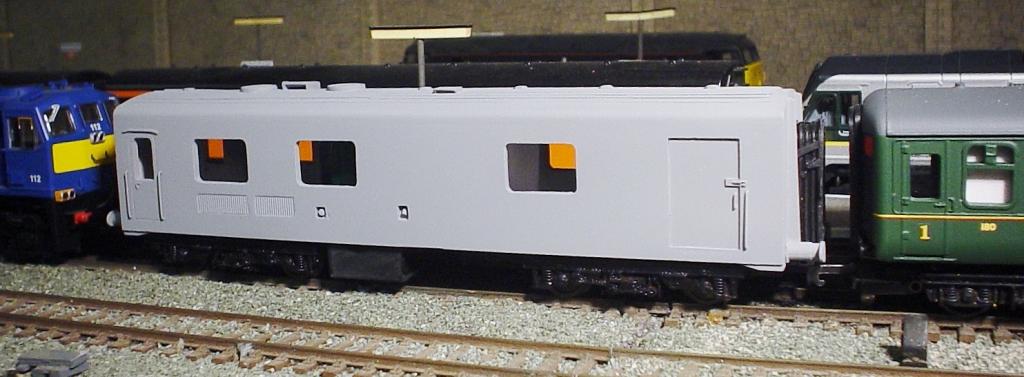-
Posts
547 -
Joined
-
Last visited
-
Days Won
1
Content Type
Profiles
Forums
Events
Gallery
Everything posted by Dhu Varren
-
Article on page 44 of 'Five Foot Three', the RPSI magazine No 44, regarding camping coaches. http://www.steamtrainsireland.com/FFT/FFT44.pdf
-
Easy enough Kieran. 1. Tick box to the right of message. 2. Click on 'Selected Messages' box at the bottom of the page. 3. Select 'Delete' option. 4. Click 'Proceed'. Job done.
-

Pictures taken in 1977/8 on CIE system
Dhu Varren replied to jhb171achill's topic in Photos & Videos of the Prototype
Whether you guys like it or not, the railbus is as much a part of Irish railway heritage as any cattle wagon. It is just a shame that preservationists of the distant past did not have the foresight to obtain a cattle wagon for preservation, before they were all scrapped. -

Rachelstown and St Stephens Green
Dhu Varren replied to The Derry Road's topic in Irish Model Layouts
Looking good Ray. -

Generator coaches for MkIIa and MkIII coaches.
Dhu Varren replied to Robert Davies's question in Questions & Answers
Pullman gangways are associated with the buckeye automatic coupling. Prior to Nationalisation the coupling was widely adopted by the Southern (Maunsell and Bulleid) and the LNER ( Gresley and Thompson) as well as being used on Pullman cars. The LNER are probably unique in UK steam in pullman gangways were used on coridor tenders. Post Nationalisation Pullman gangways were used on MK1, and later, hauled coaching stock plus a number of EMUs. Coach side buffers play no part in Pullman to Pullman conections with the bellows part being kept together with sprongs at the bottom of the gangway. There are no clips or other fittings holding the gangways together, simply spring pressure. As far as I know all Pullman, LNER, Southern and BR gangways are compatable Standard gangways were used on all GW and LMS corridor vehicles and some on the Southern and for some reason all the DMU Fleet. Having shunted two coaches together and coupled them using the screw coupling the gangways need to be deployed. The gangways are free to move back and forth and need to be held in the collapsed position by hooks. Having released all 4 hooks, manual effort is needed to pull/push the two bellows units together. To hold the bellows together each has a U shaped clip to fix one end plate to the other. The one clip per bellows is always on the same side so the one on the other coach clips the other side together. Standard gangways are very mandraulic and really require two shunters. Incompatability - Whilst a standard gangway vehicle can be coupled to a Pullman fitted vehicle, buffers long and buckeye dropped, unmodified standard gangways cannot connect . Firstly the standard gangway is narrower than the Pullman there is only a single clip. To overcome this problem some standard gangways are modified with two much wider mounted clips which fit over the Pullman gangway. In this configuration the gangway is safe to use. Prior to the introduction of Mk2 & Mk3 coaching stock, Irish stock was fitted with Standard 'bellows' type gangways. The ex BR Mk1 GSVs had their Pullman gangways replaced with Standard gangways in order to run with the likes of Cravens etc. -
The Mk2s are repaints as well, using the same paint, which is a 50/50 mix of Humbrol 3 and 195. After the decals were applied, a coat of Railmatch satin varnish was sprayed on.
-
Looking better every time.
-
The lettering is off an RPSI transfer sheet by Railtec Transfers. The lining was done on a PC, and printed on to transfer paper on a laser printer. Railtec also do an RPSI lining transfer sheet, but it is quite an expensive sheet.
-
Some time ago, I decided to build a Dutch Van to go with my rake of RPSI Mk 2 coaches. A couple of years ago, at an exhibition, I picked up an old Triang Track Cleaning wagon, with no roof and a broken bogie, for £1.00. Later in the year at another exhibition, I picked up an old Triang Transcontinental Reefer Boxcar with a broken roof also for £1.00. The bogies were used to repair the track cleaning wagon, and the roof, after repair and adjustment, was also used on the track cleaner. That left a perfectly good Reefer body in my junk box. After checking the dimensions, it was found to be 1mm longer than a Dutch Van would be, but the width was fine. A bit of work with a fine saw and a file, saw the height reduced and the raised detail on the sides and ends removed, leaving a very useable shell for a Dutch Van. This van was to be one of the original steam generator type, one of which is now running with the RPSI as No 462. A new roof was fabricated, using two Triang Hornby LWB goods brake van roofs to get the basic arc for the roof, plastic strip makes up the extra width. Ribbing was added using plastic rod flattened on one side, and roof detail made from plasticard, and bits of scrap plastic. This is a picture of the roof of an EGV Dutch Van under construction using the two Triang roofs. Windows and doors were either cut out, or scribed where appropriate, and handrails and other detail added. The van is currently sitting on Jouef MK3 coach bogies, which surprisingly don’t look too much out of place, but these will ultimately be replaced with something more suitable at a later date. After priming with grey primer from Halfords, which would normally reveal any imperfections in the construction of the vehicle, I am glad to say the primer revealed nothing worth talking about. The next step was to finish it off in RPSI livery, glaze it and finish the underframe. Almost completed. Just glazing and underframe detail to do. I have to say, I am really pleased the way it has turned out, even down to only having the lining on one side, as the prototype had at one time. From refrigerator van to heating van:-
-

A few livery oddities in 1989
Dhu Varren replied to jhb171achill's topic in Photos & Videos of the Prototype
With the presence of an NCC 'brown van' and the style of signals, I would suggest the location is the Downpatrick railway bay platform. Probably this vehicle. See also http://irishrailwaymodeller.com/content.php/323-Travelling-Post-Office -
I am assuming that the GNR U/UG tenders referred to, are the modern type which, at first glance, have a passing resemblance to the large tenders fitted to some of the NCC W class locos. The two tender types are only similar in appearance, the GNR version being much smaller, with a water capacity of only 2500 gallons, and a coal capacity of 6 tons, weighing a total of 37 tons on a 13 ft wheelbase. The NCC version is similar to the LMS 3500 gallon Stanier tender, with the same water capacity, and has a 7 ton coal capacity, weighing a total of almost 48 tons, on a 13ft wheelbase. The LMS also had a 4000 gallon Stanier tender with a 9 ton coal capacity, on a 15ft wheelbase.
-
Why would the centre line be further out, since whether modelling with 16.5mm or 21mm gauge, the centre line of the track is the centre line of rolling stock and moving it out by 2.25mm would increase the gap between rolling stock and the platform. I could understand moving the centre line of the track if the rolling stock was to be built to the wider Irish loading gauge, but if the stock runs fine past platforms on 16.5mm track, there would be no need to move the track centre.
-
I have never had any problem obtaining spares for Hornby locomotives, but not necessarily from Hornby. I first have a look on the Hornby website, and find a Service Sheet in the download section, for the locomotive in question. Once I have the Service Sheet, I find the part number of the part required, and do a web or ebay search. If the loco does not have a Service Sheet on the Hornby site, Lendons of Cardiff have loads of Service Sheets right back to Tri-ang, and many other makes as well. http://www.lendonsmodelshop.co.uk/index.asp?button=button2
-
It can also save you money. Cost of sending a 1kg parcel direct to ROI would be 10.49 Euro. Via AddressPal, it would be £2.80 2nd class post in UK, plus 3.50 Euro on collection from PO, making a total of 8.05 Euro. However, this is at basic postage rates, most retailers would be charging more than that for postage, whatever way the parcel was sent.
-

4mm scale 'WT' rebuild from a Fowler 2-6-4T
Dhu Varren replied to Richard EH's topic in Irish Models
The two sheets have the same reference number because they are essentially the same sheet, except that the roundel size has been reduced. The colour was also lightened, as the original was too red. -
They certainly get around, these steam heat vans. I spotted one a couple of years ago at Boat of Garten on the Strathspey Railway in the North of Scotland, resplendent in IR tippex livery.
-

4mm scale 'WT' rebuild from a Fowler 2-6-4T
Dhu Varren replied to Richard EH's topic in Irish Models
Some time ago, I purchased a sheet of UTA decals, only to find that the roundels were too large at 5.8mm diameter. I corresponded with Steve at Railtec, and he resized the roundels to 4.7mm, which, according to the information I have, is the correct size in 4mm scale, namely 14 inches diameter. The attached picture shows the difference in sizes. That on the left is the original size, and that on the right is the smaller version. -

4mm scale 'WT' rebuild from a Fowler 2-6-4T
Dhu Varren replied to Richard EH's topic in Irish Models
Studio Scale Models do a transfer set for No 4. http://www.studio-scale-models.com/img/L27.jpg -
No such beast as the 67 Class Kevin. They were members of the 80 Class, but the 80 Class ran out of numbers once they hit 99, due to the 101 class being next. They then used existing vacant numbers by being squeezed in between the MPD numbers and the 70 Class, namely 67, 68 & 69.
-
I think it must be just you, GSR. That is a nice piece of kit Kieran.
-
It was great to meet many old friends again, and some new faces as well. Kirley must have taken pictures of virtually every exhibit there. The Ayr MRC Irish layout was excellent, although having been on a layout directly opposite for three days, what spoiled it for me, was that all movements that I saw, including main line arrivals and departures, were at a scale walking speed.
-

Belmond Hibernian - Luxury Touring Train
Dhu Varren replied to Broithe's topic in What's happening on the network?
The answer is neither. Known as Pullman Gangways, they are used in conjunction with buckeye couplers and held together by spring pressure. Quote:- Pullman gangways are associated with the buckeye automatic coupling. Prior to Nationalisation the coupling was widely adopted by the Southern (Maunsell and Bulleid) and the LNER ( Gresley and Thompson) as well as being used on Pullman cars. The LNER are probably unique in UK steam in that Pullman gangways were used on coridor tenders. Post Nationalisation Pullman gangways were used on MK1, and later, loco hauled coaching stock plus a number of EMUs. Coach side buffers play no part in Pullman to Pullman conections with the bellows part being kept together with springs at the bottom of the gangway. There are no clips or other fittings holding the gangways together, simply spring pressure. -
There are two other Irish layouts attending. Castle Rackrent in O gauge and Bothar an Duga Griffin in 00 gauge. Don't know where they are from. Once again, I will be there exhibiting, with the Moray MRG layout King Street. It would be good to meet any site members who have a spare few minutes for a blether.
-
Due to the local Toy/Model shop closing down recently, I had to find another source of Revell and Humbrol paints. I ordered nine tins of paint on eBay, with free delivery (within UK), expecting delivery by courier, but lo and behold, the paint arrived via Royal Mail 2nd Class mail. Can't get my head round that one.
-
I would say the window frame on 177 is just unpainted. NIR 112 sports a couple of cab windows replaced whilst on loan to IE, reportedly taken from a withdrawn Baby GM, and still sporting Tippex livery. The Murphy Models model of 112 has these windows in Tippex livery. One of the replaced windows.
.png.c363cdf5c3fb7955cd92a55eb6dbbae0.png)







.jpg.0c1b33272faa851b8a538fd8889eb8bd.jpg)
.jpg.aa307501f9f11a4de0178522d114aaf5.jpg)


.png.9bd3d318642703db0c25611ed39e221f.png)